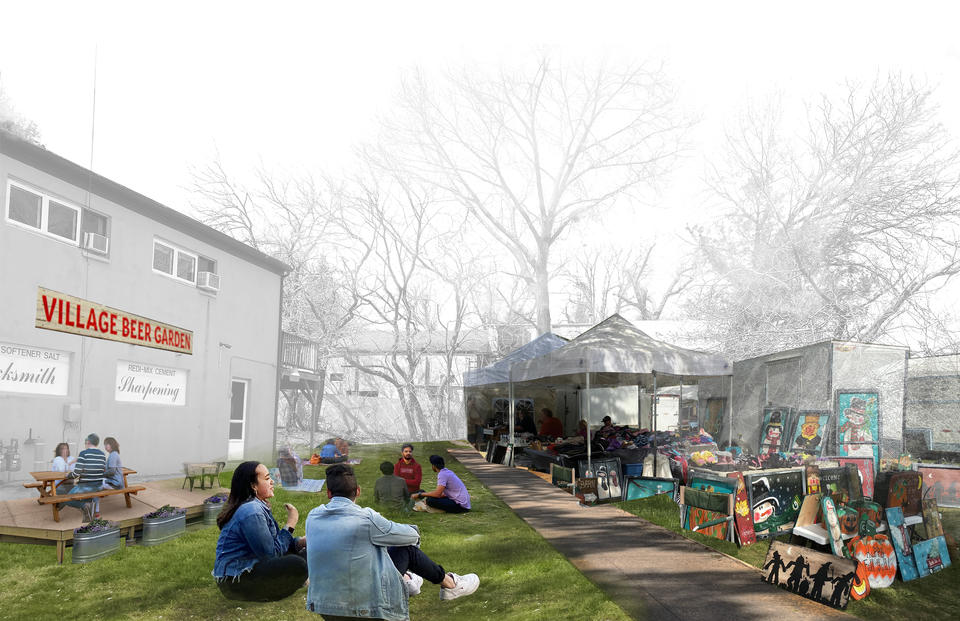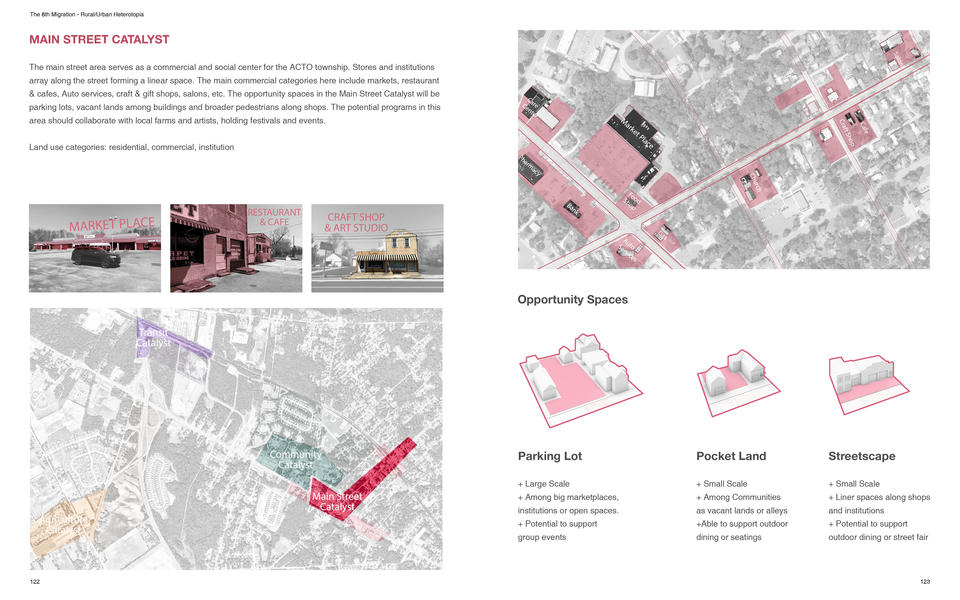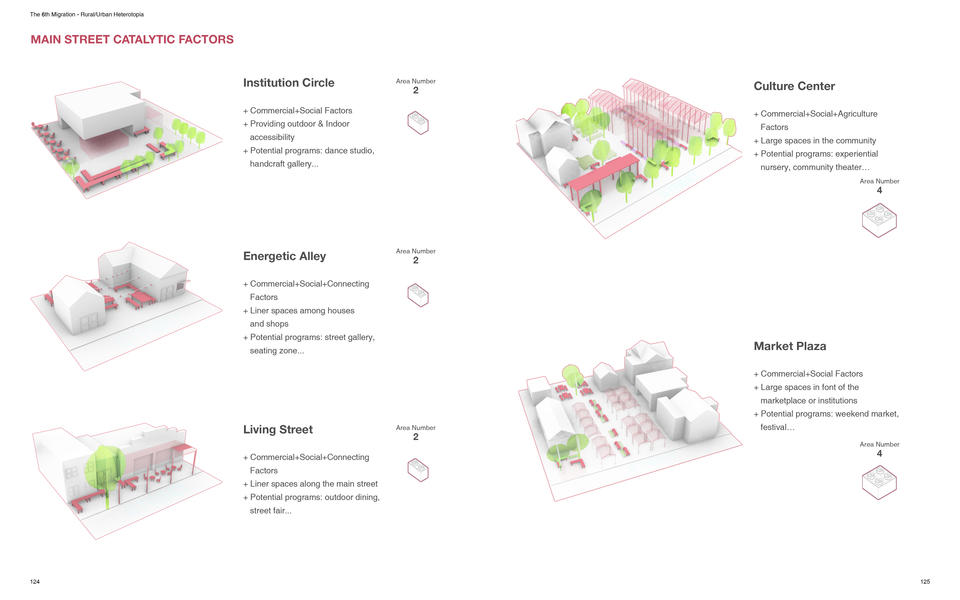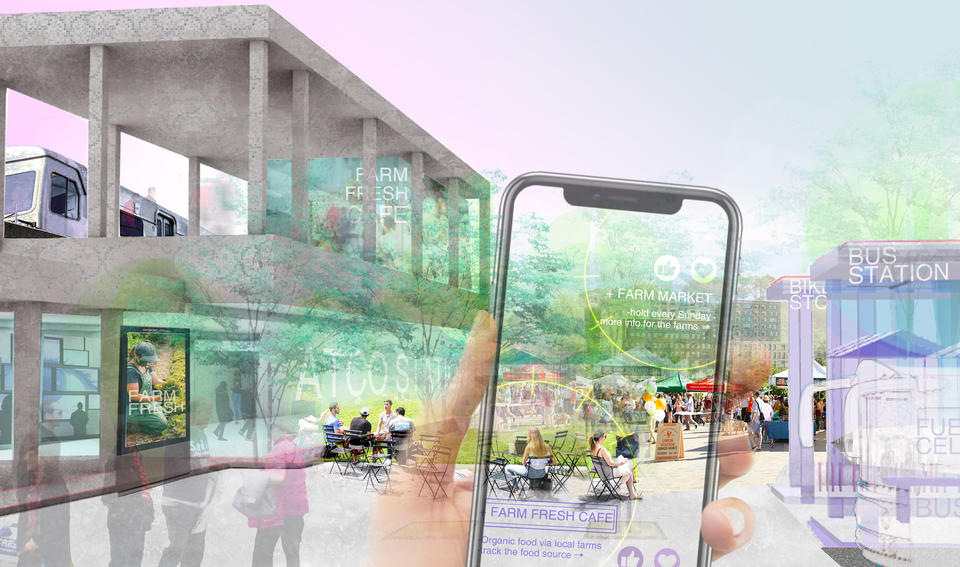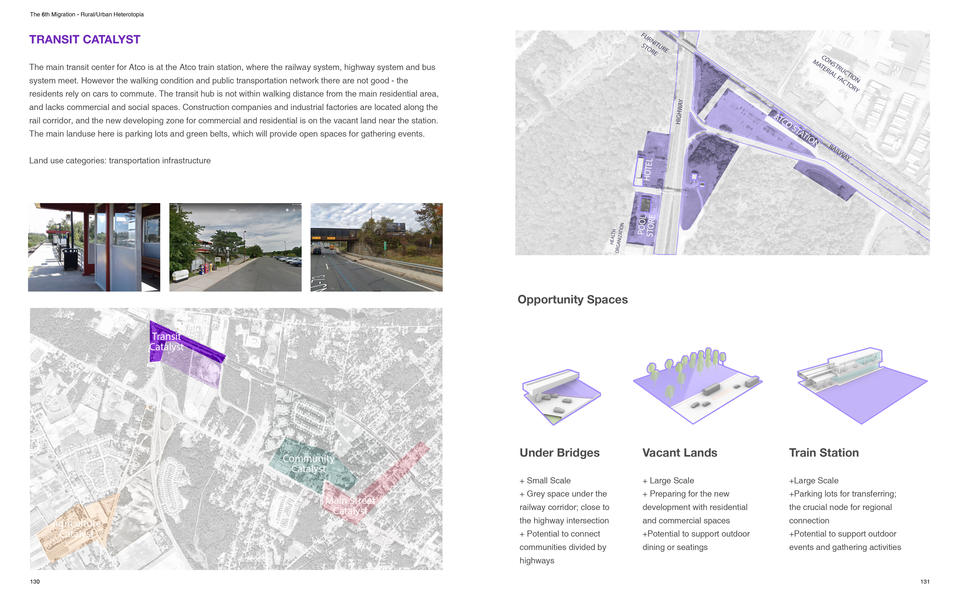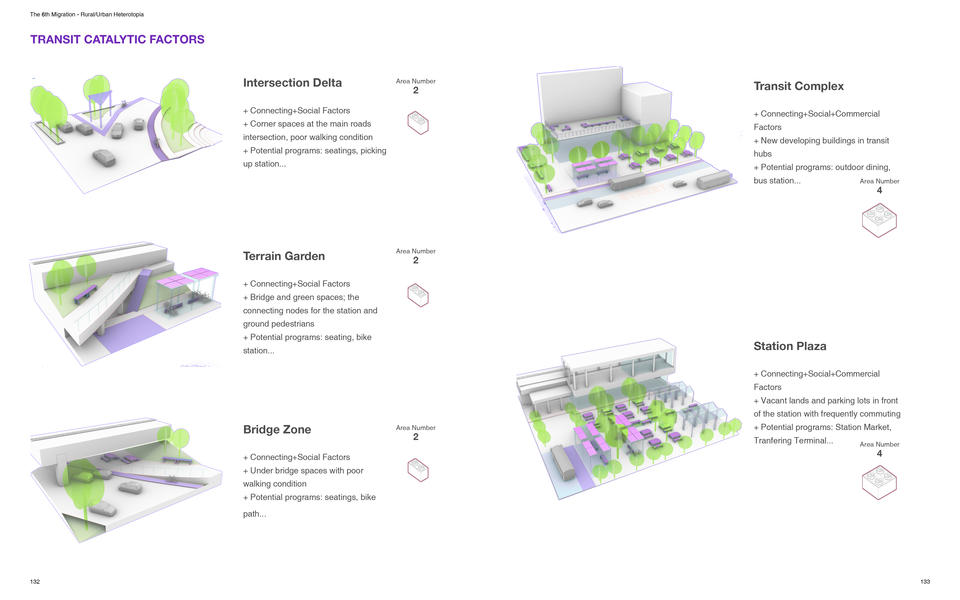ABSTRACT
Written during the pandemic of 2020/2021 ,as people moved out of cities with new options to work remotely, we have witnessed a new trend of urban-rural migration.
This study looks in detail at rural /suburban communities in southern New Jersey and asks how a planning framework and community engagement strategy can come together to coordinate urban-rural development at different scales.
This thesis project applies two types of design strategies - “top down” as planning guidelines communication and “bottom up” as community-oriented design to bring residents in the conversation of town development, and in the long term stimulate regional development to solve the problems caused by previous migrations. Starting with analysis of the built environment, social relationships and nature resources in rural New Jersey, the project tries to identify the potential rural towns and to structure the strategies in 3 scales - regional scale, town scale and district scale. It comes up with main principles - “connection”, “concentration” and “preservation” to guide the regional development as “Urban/Rural Heterotopia”.
THE 6TH MIGRATION
When we talk about the year 2020, we will always mention “pandemic”, “social distancing” or “remote working”. We took these changes for granted as temporary strategies for this special situation. However, if we zoom out to a longer scale of time period, globalization has already rebuilt the economic network and influenced the way people work and live. As globalization and the IT revolution significantly influences the economic, social and cultural aspects of the world, the patterns of city and rural areas have also changed. This project regards “the 6th Migration“ as an opportunity to re-imagine small towns as a result of changing expectations for labor that have arisen because of the pandemic.
Image
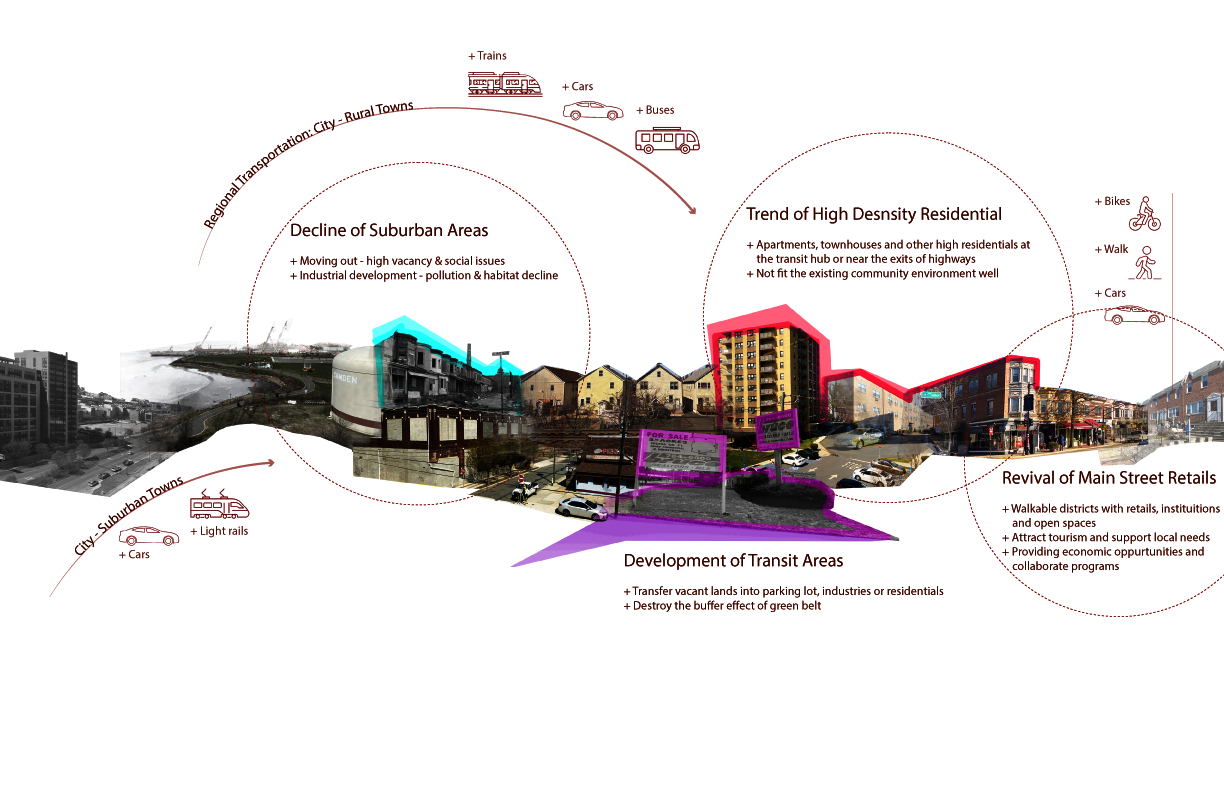
Image
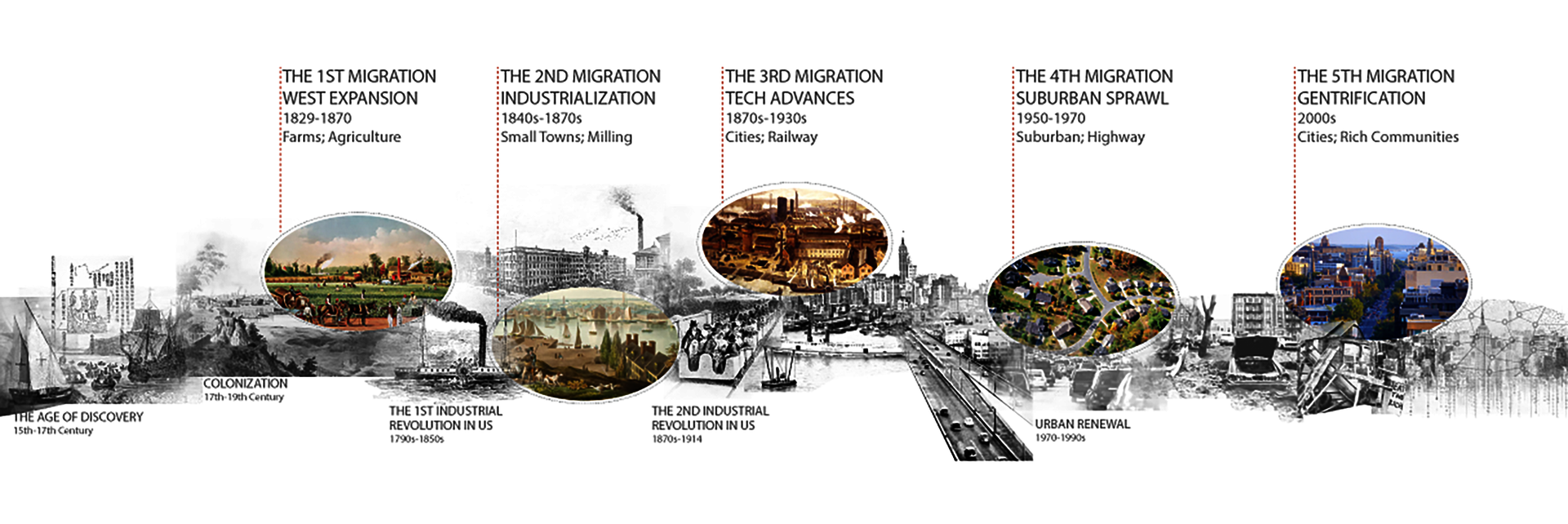
▲ HISTORICAL MIGRATIONS
+ Urban Rural Migration happens with technology innovation or social revolution
+ Urban Rural Migration relies on certain media (transportation...)
+ Nowadays trend: small, enclosed, inclusive & self-sufficient communities
Image
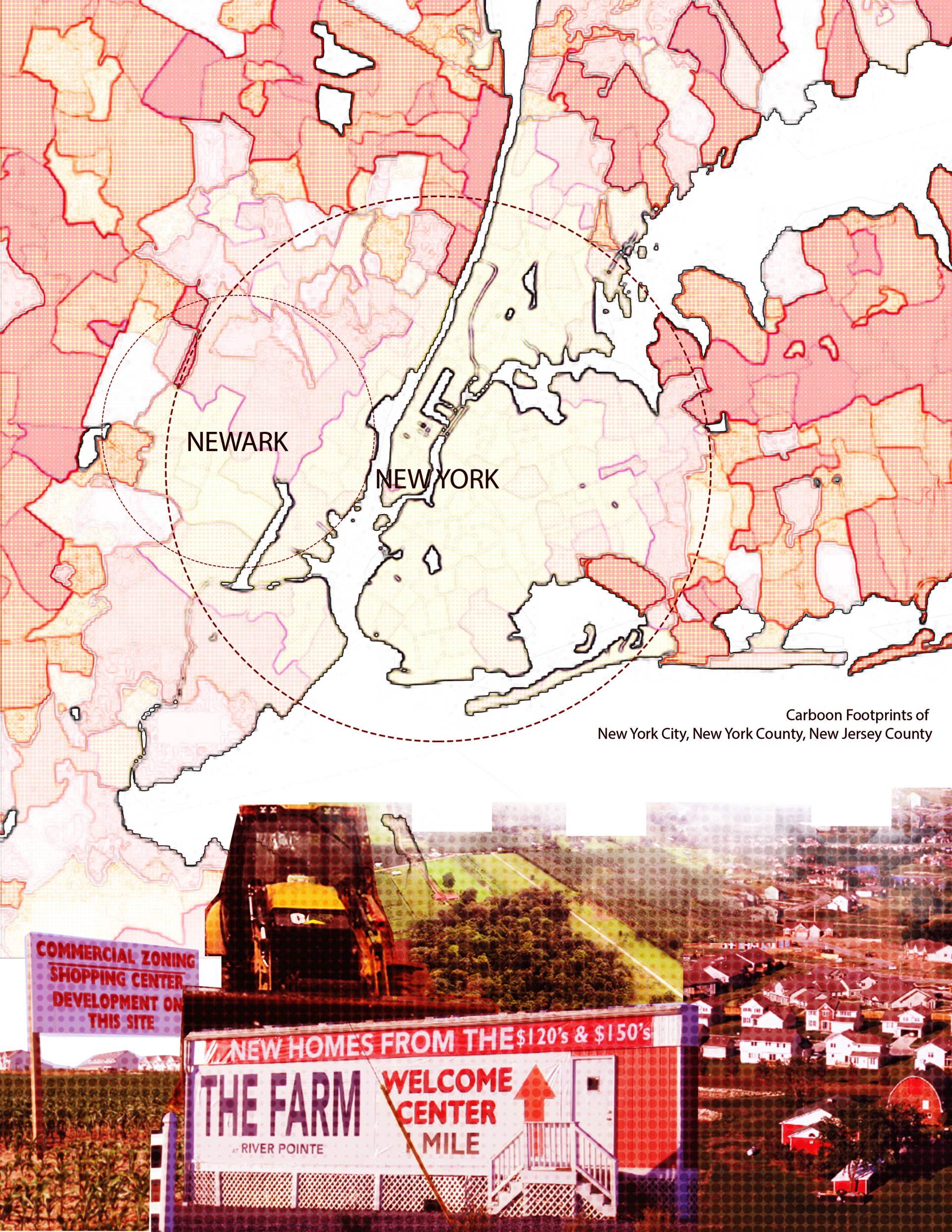
▲ After rapid urbanization and decline of heavy industries, we saw the rise and fall of big cities and several migrations between urban and rural areas. Previous practices of decentralization showed the potential of relocation, but they failed in the wrong in habitat scale, economic decline, resource shortages, culture conflicts and other issues.
Since the Great Recession, most of the nation’s rural counties have struggled to recover lost jobs and retain their people. The story is markedly different in the nation’s largest urban communities. Rural flight (or rural exodus) is the migratory pattern of peoples from rural areas into urban areas. It is urbanization seen from the rural perspective. In modern times, it often occurs in a region following the industrialization of agriculture—when fewer people are needed to bring the same amount of agricultural output to market—and related agricultural services and industries are consolidated. Rural flight is exacerbated when the population decline leads to the loss of rural services (such as business enterprises and schools), which leads to greater loss of population as people leave to seek those features.
As the popularity of single-family houses rose during the 20th century, and as mass ownership of cars allowed people to get to homes located far outside of city centers, new streets spread outwards to serve large housing subdivisions. This trend leads to a hungry demand for land, accelerating road construction, and further spilling into fields, grasslands, forests, and other wild lands. Researches also show that low density, large-lot suburban areas are a bum deal for them economically. The tax revenue from a relatively small number of residents may not be enough to support the construction and maintenance of the miles and miles of roads, sidewalks, sewer lines, and water pipes needed to service the scattered homes. Negative health outcomes have also been attributed to living in suburban sprawl. In Conclusion, the previous migration between urban and rural areas have caused negative impacts socially and ecologically.
RURAL HETEROTOPIA
The 6th migration will introduce more opportunities for resource sharing, culture integration, community participatory and democracy. It will also bring the risk of over sprawl and gentrification with unexpectable development, leading to social and ecological problems. By main principles through 3 scales, the project aims to guide rural development step by step and to prevent negative impacts. The overall strategies bring the requirement for regional network and guide the detail designs in communities. However, from regional scale to town scale, the “top down” strategies could not respond to the cultural background and satisfy local needs well. Meanwhile, the master planning framework lost the resilience towards the new development. There should be a response mechanism throughout the iterative process of regional development, to balance the control of principles and the initiatives of local communities, and to conduct strategies in different scales.
Image
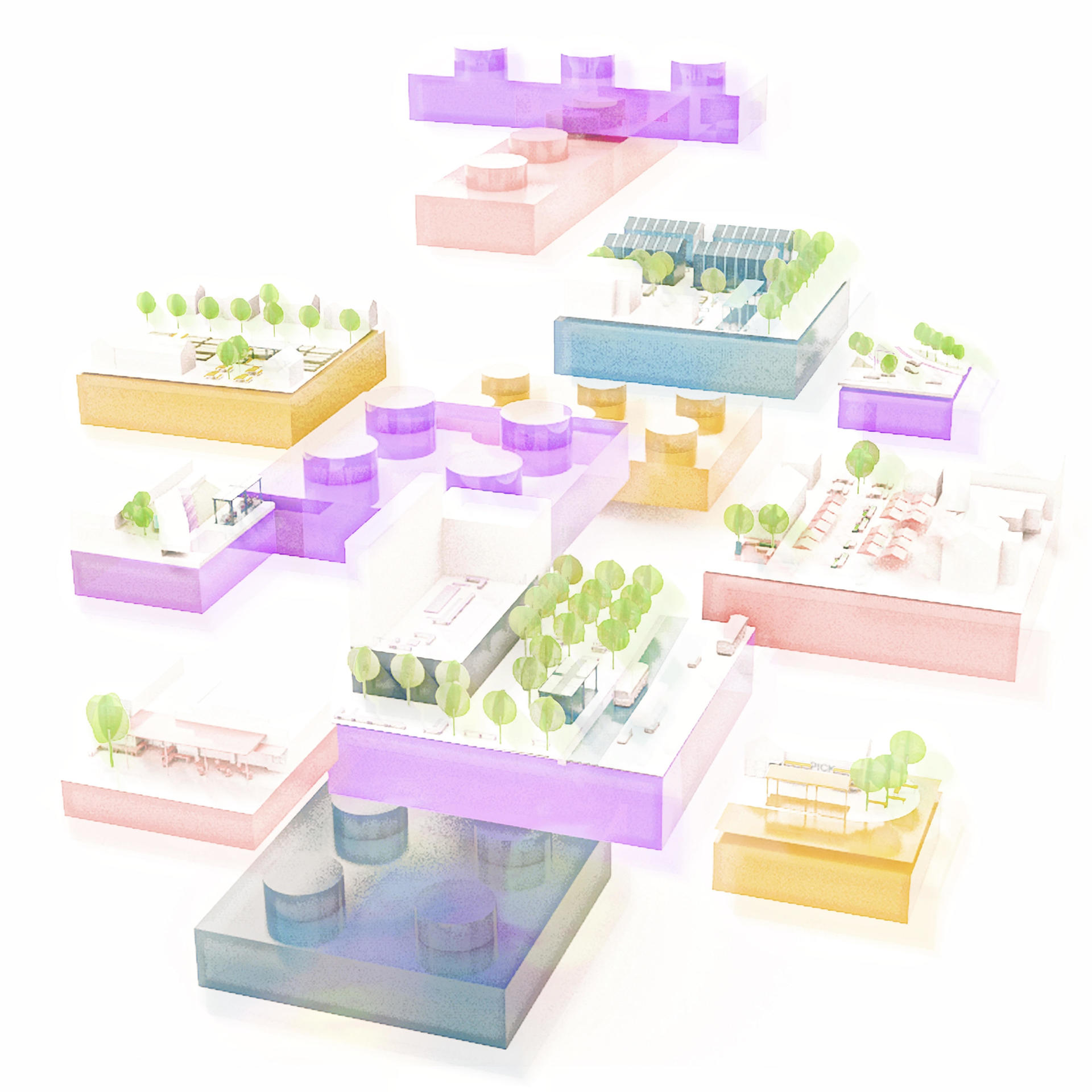
Image
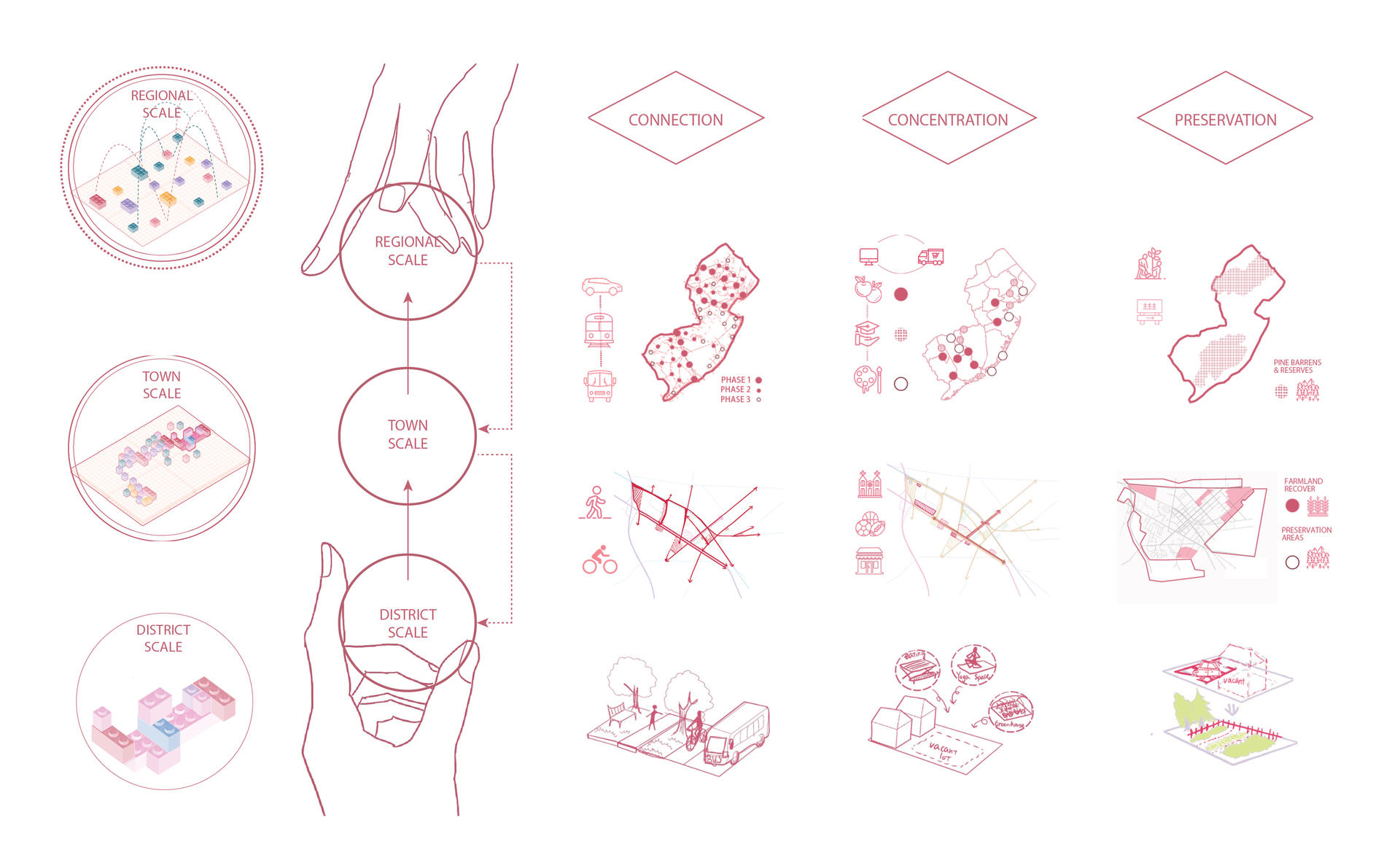
▲ + CONNECTION: build up a mutual-beneficial system for regional areas with better transportation and program network.
+ CONCENTRATION: build up new types of public spaces and rural communities to attract economy and population.
+ PRESERVATION: Prevent negative impacts of over sprawl by controlling the landuse patterns and long term preservation programs.
RURAL CATALYST
Therefore, the project introduces the “bottom up” strategy with “Rural Catalyst” - starting with small efforts of rural community development to stimulate greater effects on a regional scale. “Catalyst” is the district design served for a certain or mixed land use, providing various programs and promoting the town development. The project applies engagement strategies in rural catalyst design, not only helping communities understand a broader background of regional development through games, but also conveying the local needs to guide the planning decision.The engagement of rural catalyst game brings stakeholders and other participants in the planning conversation, and in the long term encourages the resource and technology exchanges, solving the urban/suburban problems caused by previous migrations.
Image
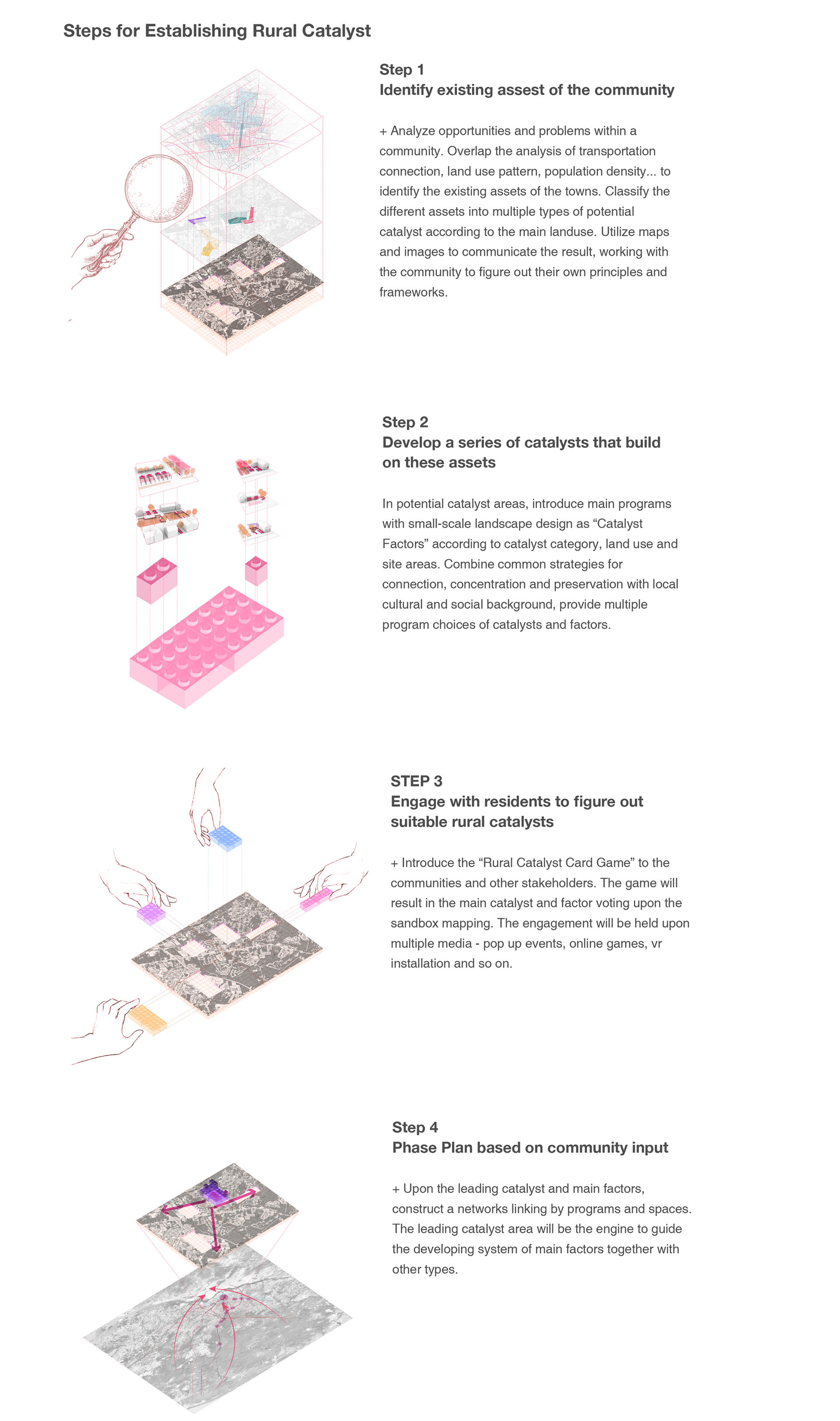
Image
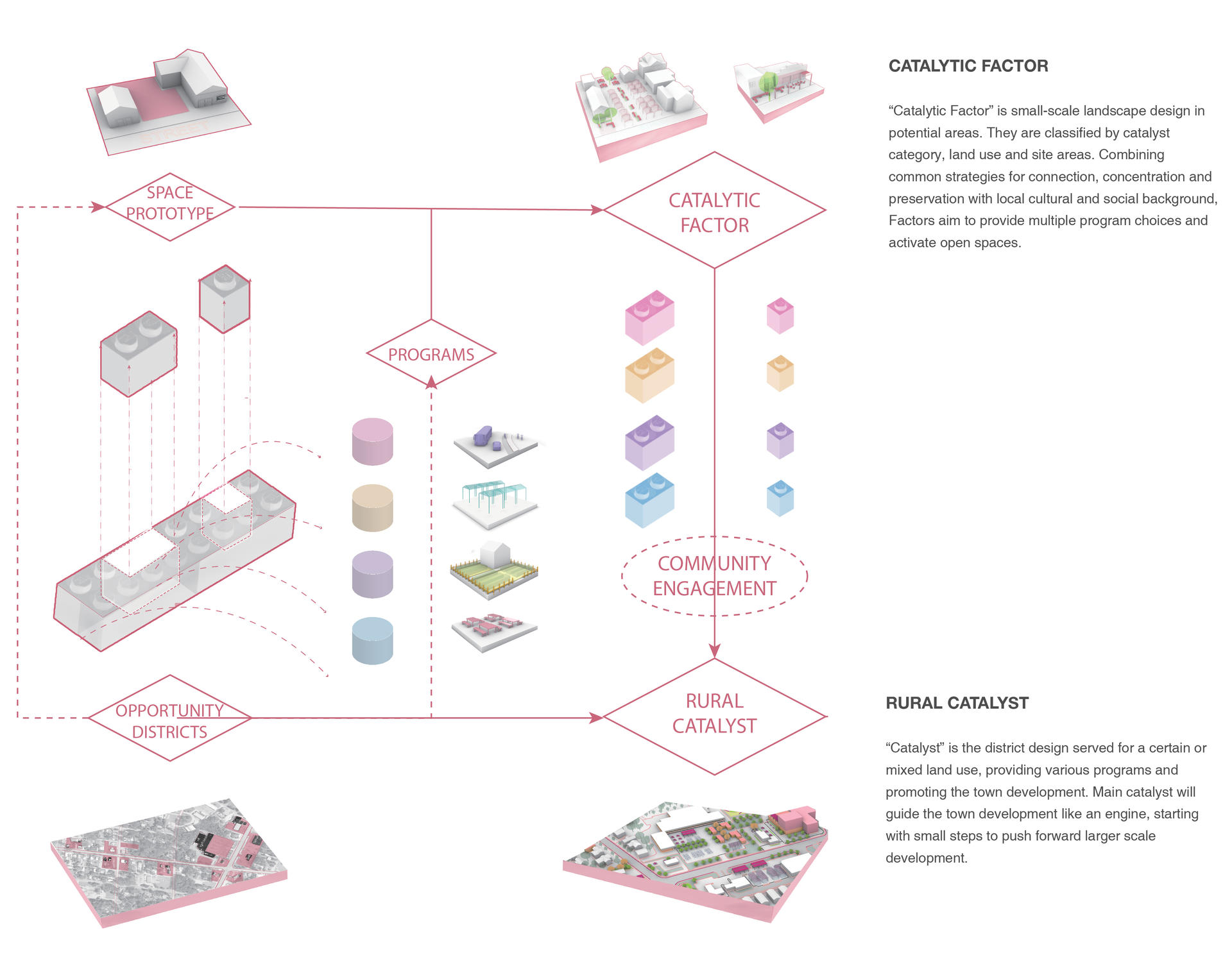
Image
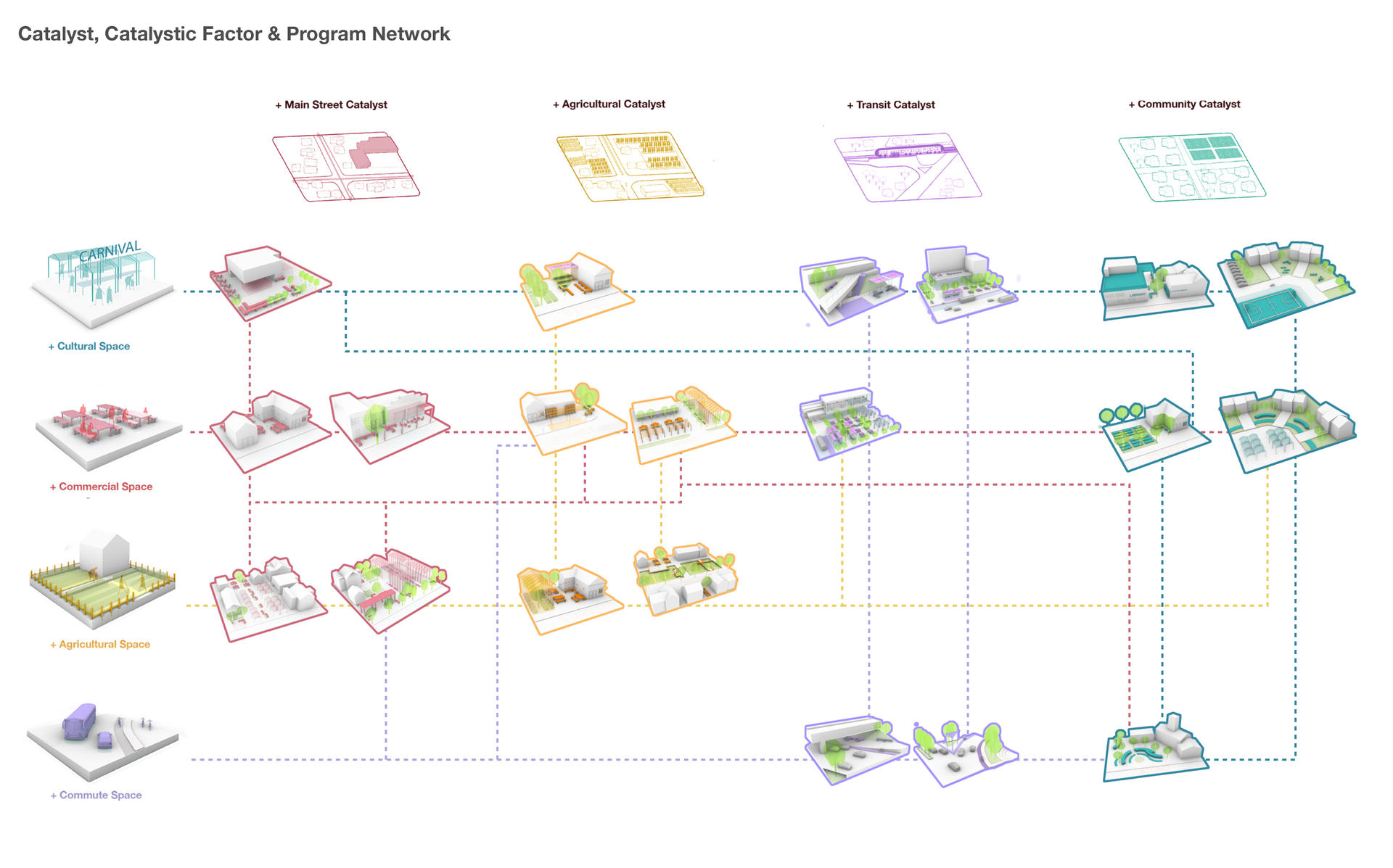
▲ In potential catalyst areas, introduce main programs with small-scale landscape design as “Catalytic Factors” according to catalyst category, land use and site areas. Combine common strategies for connection, concentration and preservation with local cultural and social background, provide multiple program choices of catalysts and factors.
Image
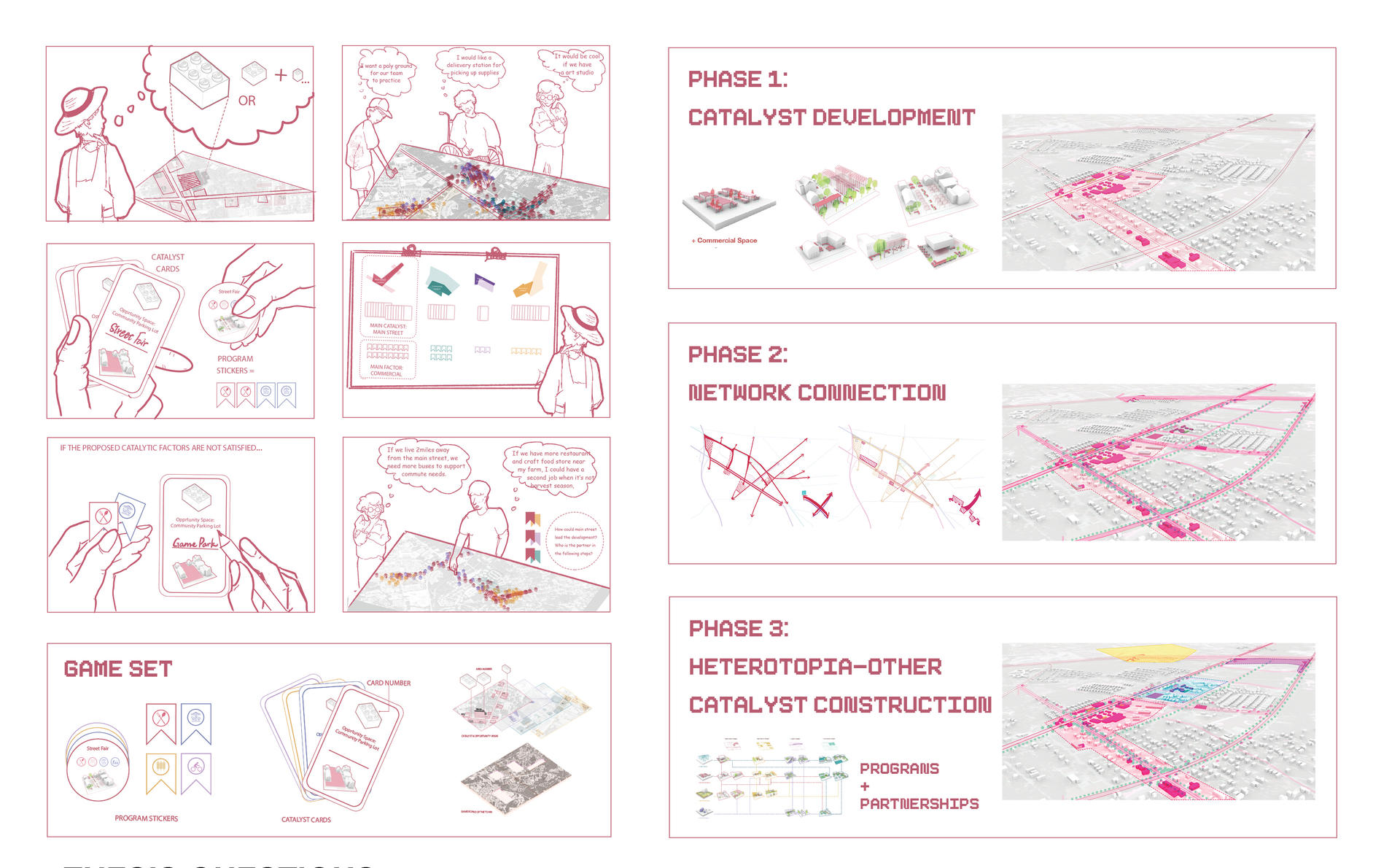
▲ Introduce the “Rural Catalyst Card Game” to the communities and other stakeholders. The game will result in the main catalyst and factor voting upon the sandbox mapping. The engagement will be held upon multiple media - pop up events, online games, vr installation and so on.
The game will continue the conversation about community-oriented framework and upon their own principles participants will set up their own rules to select or develop catalysts and factors
REFLECTION
Through my thesis project, I am always questioning myself about the boundary of plans from designers and ideas from the community in the process of regional development. I am always testing how much work should be done and to what degree is good for communication and intervention. Through my thesis research I also tried to understand how landscape design can encourage grassroots democracy in rural planning and achieve living equality through the 6th migration. I see landscape architecture as a resilient and inclusive framework to keep the dynamic balance of planning control and public participatory, the harmony of development and preservation.
Landscape is the flexible strategy for planners and policy makers to understand the broader background of social development while also taking public voices into consideration. In the process of regional planning, decision makers are constantly facing the unexpectable conditions or problems beyond life-span scale. Landscape architecture is the iterative mechanism with different scale strategies and the long term framework to deal with new development.
Landscape is a language to communicate throughout different cultural and social backgrounds. With information technology development, there’s been an increasing need for cultural expression and communication. Social programs and design engagement in landscape architecture will play an important part in the planning process.Landscape architecture will not only support social and ecology functions, but also bring different stakeholders at the same table to process the design together. It works as a process for the public to know about the broader background of the regional system, to express their own needs and preferences, and to exercise their rights in the decision making.
Image
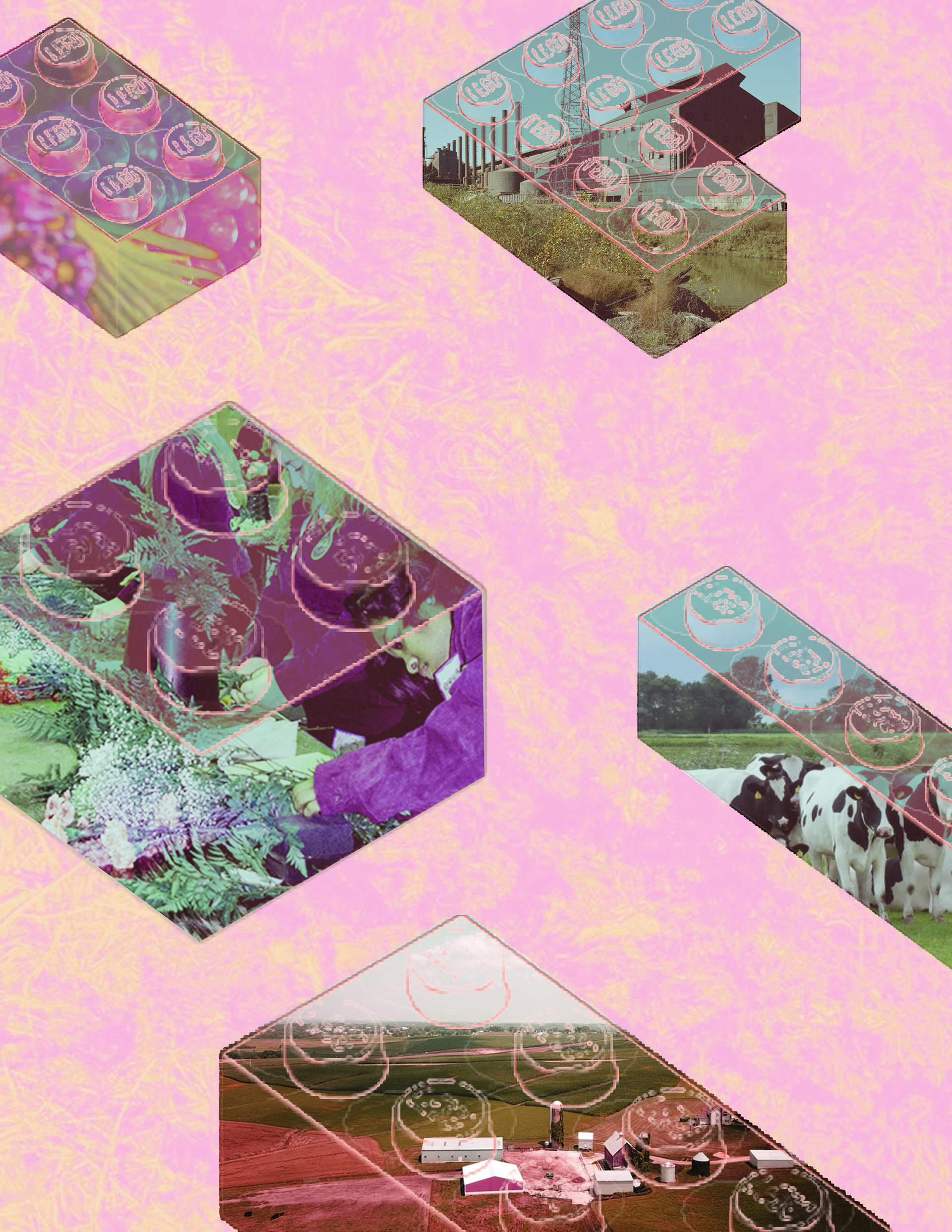
ANNONTATED BIBILOGRAPHY
[1] Sussman, C. (1977). Planning the fourth migration: The neglected vision of the Regional Planning Association of America. Cambridge, MA: M.I.T. Press.
[2] Foucault, M. (1986). Of Other Spaces: Utopias and Heterotopias. Diacritics, 16(1), 22. doi:10.2307/464648
[3] Waldheim, C. (2012). Landscape as Urbanism: A General Theory. Princeton University Press. JSTOR, www.jstor.org/stable/j.ctvcszzn2. Accessed 18 Feb. 2021.
[4] Waldheim, C. (2012). Notes toward a history of AGRARIAN URBANISM. Sustaining Cities, 63-75. doi:10.36019/9780813554174-006
[5] Cronon, W. (1997). Nature’s metropolis: Chicago and the Great West. New York: W.W. Norton.
[6] Jackson, J. B. (1996). A sense of place, a sense of time. New Haven: Yale University Press. [7] Jacobs, J. (1961). The death and life of great American cities. Cape.
[8] ‘Eidetic Operations and New Landscape’ from Corner, J. (1999). Recovering landscape: Essays in contemporary landscape architecture. New York: Princeton Architectural Press. [9] Elizabeth K. Meyer. (1997). The Expanded Field of Landscape Architecture. In Ecological Design and Planning , edited by George F. Thompson and Frederick R. Steiner, 45–79. New York: John Wiley & Sons,Inc. Excerpt from 71-77.
[10] Stringer, B. (2017). Villages and urbanization. Architecture and Culture, 5(1), 5-20. doi:10.1080/20507828.2017.1299435
[11] Stringer, B. (2017). Architecture and culture: A village and globalization issue. Architecture and Culture, 5(1), 1-4. doi:10.1080/20507828.2017.1299434
[12] Regional Plan Association. RPA. (n.d.). https://rpa.org/.
[13] New Jersey. New Jersey | Rural Development. (n.d.). https://www.rd.usda.gov/nj.
[14] Shughes. (n.d.). Department of Agriculture: About NJDA. Department of Agriculture | About NJDA. https://www.nj.gov/agriculture/about/overview.html.
[15] Dshin. (2021, May 27). Remove barriers to transit-oriented and mixed-use development. The Fourth Regional Plan. http://fourthplan.org/action/tod.
[16] Farm Flavor (2020, August 21). New Jersey Agriculture Overview. Farm Flavor. https://farmflavor.com/new-jersey/new-jersey-farm-to-table/new-jersey-a…
[17] COMMUNITY POWER AND GRASSROOTS DEMOCRACY
https://prd-idrc.azureedge.net/sites/default/files/openebooks/784-1/ind…

